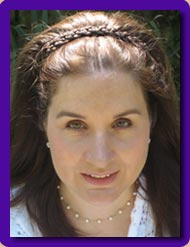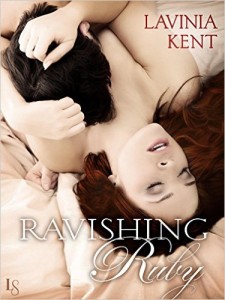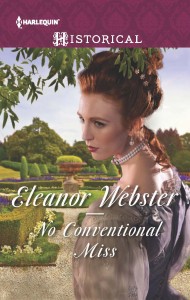 I am delighted to welcome back to Risky Regencies my good friend and wonderful author, Lavinia Kent. Ravishing Ruby is Lavinia’s latest book out from the fabulous Loveswept line, the latest in her Bound and Determined series.
I am delighted to welcome back to Risky Regencies my good friend and wonderful author, Lavinia Kent. Ravishing Ruby is Lavinia’s latest book out from the fabulous Loveswept line, the latest in her Bound and Determined series.
Here what some Amazon reviewers have to say about Ravishing Ruby:
“Lavinia Kent is one of the best authors I’ve ever read. Ravishing Ruby does not disappoint, and was worth every penny! You HAVE to read this book! And every one in this series, especially if you love historical romances! Seriously, Lavinia is one of the best.”
“Lavinia Kent is amazing with those sex scene, she’s my queen. They are hot, they are unique and not one is like the other. This time Kent plays with fantasies. And oh … those fantasies …
Read it! It’s amazing!”
Lavinia will give away one ebook copy (your choice of formats) of Ravishing Ruby to one commenter, chosen at random.
Here’s Lavinia!
Ravishing Ruby is the continuing story of Ruby, Madame Rouge, the proprietor of a London brothel. It follows the novella, Revealing Ruby, in which we first get a glimpse inside Ruby’s world and come to understand what motivates her. Ravishing Ruby takes us deeper into that world and into her relationship with Captain Derek Price, an American ship’s captain. Because of Ruby’s unique standing in society it seems that any real relationship between them should be impossible – but things are not always as they seem.
Tell us about your Bound and Determined series. How do the books fit together?
My Bound and Determined series is a collection of extremely sensuous regency stories all bound together by Madame Rouge’s Club for Gentlemen of Taste. All the books have at least a couple of scenes that take place there, and none of the relationships would have developed without Madame Rouge’s. When I first started writing the series, I had no idea that Ruby would be ever be a heroine, but every time she stepped onto the page she started to take over, and so I was compelled to write her story.
You are known for your sensual and long love scenes. What’s unique or special about a love scene in Ravishing Ruby?
In writing the love scenes for Ravishing Ruby, I really let my imagination fly. Ruby has very “vanilla” tastes; she’s seen it all, tried most of it, and knows what she doesn’t like. What she does like is fantasy. I had a wonderful time trying to imagine what fantasies a woman of her time might have had. Sir Walter Scott had just published Ivanhoe, and I had great fun having both Ruby and Derek read the book and then act out parts of it at a masquerade.
What is “risky” about Ravishing Ruby?
I think the very idea of a true Madame as a heroine is risky. Ruby has no pretense about what she does and why she does it. She does try to create the best house possible for her girls, but she also knows that it is a business and that her livelihood depends on it. I have always been intrigued by how different the choices that women had were in past centuries. Is there any way that Ruby cannot lie about who she is and still have a chance at happiness?
Did you come across any interesting pieces of research while writing Ravishing Ruby?
I read books and poetry to think about Ruby’s fantasies: Ivanhoe, Byron’s Corsair, Arabian Nights (now, One Thousand and One Nights). It was some of the most enjoyable research I’ve ever done and really helped get me into Ruby’s mindset.
What is next for you?
 I’ve just finished writing Angel in Scarlet, my mid-summer release. It features Angela, the best friend of my heroine in Bound by Bliss, and also has several important scenes at Madame Rouge’s.
I’ve just finished writing Angel in Scarlet, my mid-summer release. It features Angela, the best friend of my heroine in Bound by Bliss, and also has several important scenes at Madame Rouge’s.
I’m just starting a Christmas story about Ruby that will take her story with Derek a little further and set up my next series. The story keeps getting longer and longer in my mind as all of my old characters come to visit.
Which brings me to my question. Do you like seeing past heroes and heroines in a later story and getting another glimpse into their lives, or do you prefer that each story be new and fresh?
Thank you for having me. I always love visiting Risky Regencies.
Diane here, again.
We love having you, Lavinia! Remember readers, Lavinia will give away one ebook of Ravishing Ruby to one lucky commenter. I’ll pick the winner at random on Monday, Feb 1.


 You know Darcy: rich, proud, standoffish, disapproving, one of the greatest romantic heroes of all time. But you don’t know this Darcy because THIS Darcy is a woman.
You know Darcy: rich, proud, standoffish, disapproving, one of the greatest romantic heroes of all time. But you don’t know this Darcy because THIS Darcy is a woman. languages, and The Love Takes Root series of Regency romances. Her essays have appeared in Self, American Baby and the Modern Love column of The New York Times. She’s also a regular contributor to the Times Motherlode blog. Lynn lives in New York City with her husband and sons. You can find her on
languages, and The Love Takes Root series of Regency romances. Her essays have appeared in Self, American Baby and the Modern Love column of The New York Times. She’s also a regular contributor to the Times Motherlode blog. Lynn lives in New York City with her husband and sons. You can find her on 




